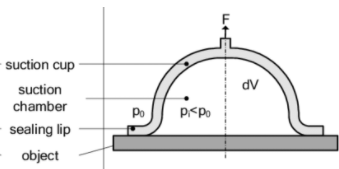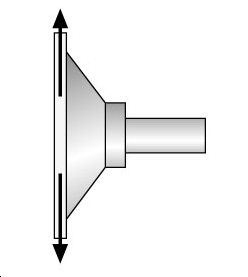First of all some nomenclature (this is for the closed type, there is also the open type):
When you press a suction cup on a surface what happens is that the air inside it is pushed out. During the compression phase of the cup the air comes out of the lip to the atmospheric pressure. So if you have an original volume $V_0$ of the suction cup, and then the volume reduces to $V_2 = \frac{V_0}{2}$, then the mass of the air trapped inside the suction cup is about half the original (keep this in mind for later on).
The dome is flexible, so while pushing it is easy to change its shape. However, because of the elasticity of the material it is trying to return to the original shape.
Following on with the example, because the suction cup tries to recover (partially), as the volume of the suction cup tries to increase the air density reduces, and so does the pressure. So what you end up is a low pressure underneath the suction cup. If the suction cup were allowed to recover its original shape (it doesn't) then the pressure in the example would be half the pressure.
Then the "suction" force is equal to :
$$F = A\cdot dP $$
where :
- A is the area of the suction cup (its projection)
- dP is the difference in pressure ($P_{High}- P_{low}$)
numerical example
Assuming a diameter of 50 mm, and a pressure difference at about half the pressure of the atmospheric pressure, then you can estimate that the pull out force would be approximately:
$$F = \frac{\pi d^2}{4} \Delta P $$ $$F \approx 2 \; [N]$$



